Continuity
Overview
I lead gameplay and level design of the award-winning puzzle game, Continuity.
I iteratively prototyped gameplay mechanics and levels to
- identify what made the game particularly fun
- expand upon that unique fun
- make onboarding part of the fun
- address player data and feedback post-release
It was created as part of my master's program at Chalmers University of Technology. The game was made by Elias Holmlid, Dmitri Kurteanu, Stefan Mikaelsson, and me over two months.
Continuity was released in November, 2009. It was awarded Best Student Game at the 2010 Independent Games Festival. It has been played by over 12 million players.
The Game Concept
In Continuity, the world is broken into tiles. You alternate between controlling the character and the tiles.
When zoomed in, you move the character.
When zoomed out, you slide the tiles.
Each level is a maze where the character must collect a key and reach the door.
Finding the Fun
I conceived of Continuity as the combination of a sliding tile puzzle and a platforming game. The idea felt clever, but I wasn't sure if people would actually enjoy playing it. And I wasn't sure how to maintain the fun after the concept's novelty faded.
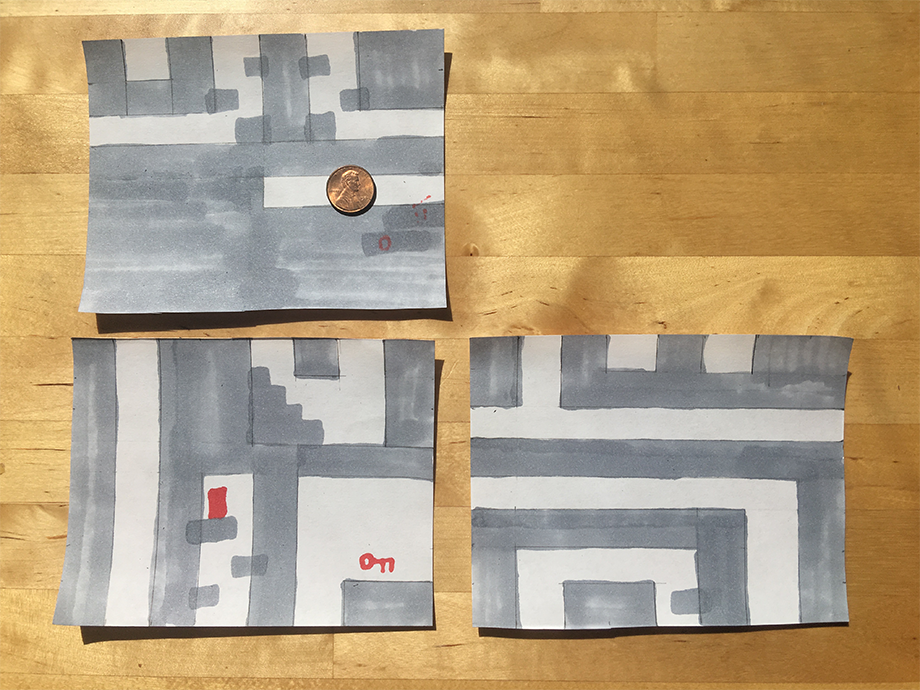
Is This Fun?
I began the design of Continuity by creating a paper prototype of 3 levels.
I used it to get the team on board with the game's concept. Next, I playtested it with outside players.
Playtesters found enjoyment in the novel combination of familiar mechanics.
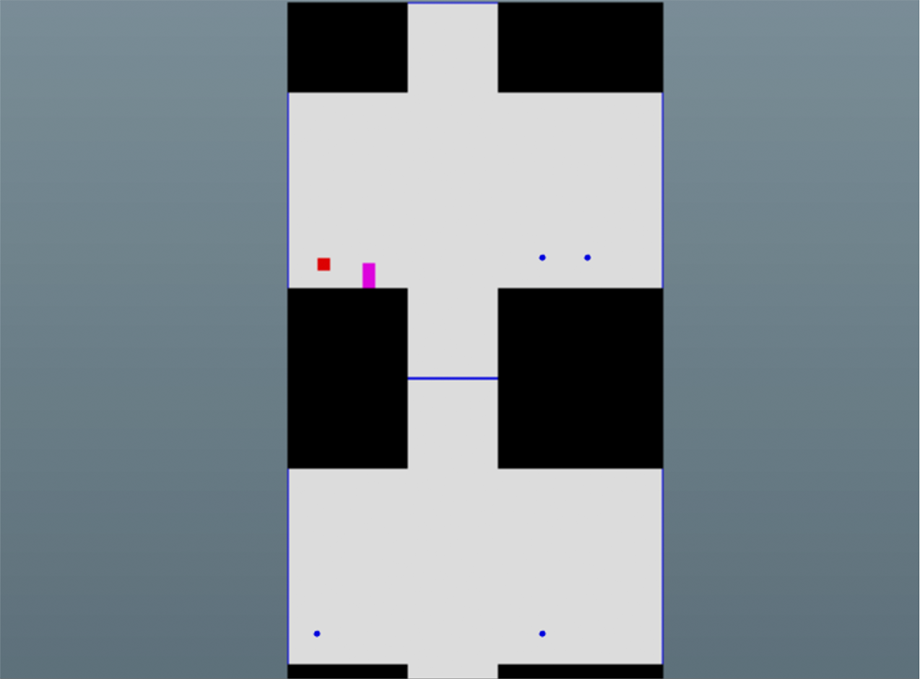
Does the Fun Hold Up?
We iteratively created and playtested low-fidelity computer prototypes to start fleshing out the game.
After several iterations, I was confident players enjoyed the game over a longer play session. However, I still wasn't sure what made the game uniquely fun.
Discovering the Fun of Discovery
Eventually, I found that players especially enjoyed puzzles that forced them to discover new gameplay mechanics. These puzzles were designed to support players learning, but playtesters felt like they'd figured it out all on their own.
In Continuity, the character is always frozen in space when the game is zoomed out. This is true for the first 12 levels, but you need to realize it to complete level 13.
Creating More Discoveries
Our team had no real artist and coding wasn't our strong suit. Rather than increasing the game's scope with new elements for players to discover, I focused on designing levels that encouraged a sense of discovery within the game's existing mechanics.
Focusing on Focused Levels
Through playtesting, I found players really enjoyed small levels focused around a specific insight. Unlike larger levels, small levels gave players discrete moments of accomplishment when they found the solution.
In this level, you learn that the character can be split between two tiles at once. You'll quickly complete the level once you make this realization.
Frequently Introducing New Concepts
Playtests showed me that I needed to introduce new concepts consistently throughout the game so that players felt like they were always learning something new. I balanced introducing new ideas through small levels and practicing understanding through larger levels.
In this level, you learn that the character can jump between adjacent tiles.
Modifying Concepts
Players really appreciated small variations to previously learned concepts. Players generally solved these levels quickly, but felt clever for adapting existing knowledge.
In this level, you again use the fact that the game world is paused when zoomed out. This time, you need to first jump up to a different tile.
Combining Concepts
Playtesters especially enjoyed levels where they needed to use a couple pieces of knowledge together.
In this level, you must pause the character in mid-air while jumping between tiles.
Teaching Through Discovery
Confident that the game was fun, I needed to figure out how to onboard new players. As a browser game, players could easily leave the moment they didn't feel engaged. I set a goal to make learning the game part of your discovery.
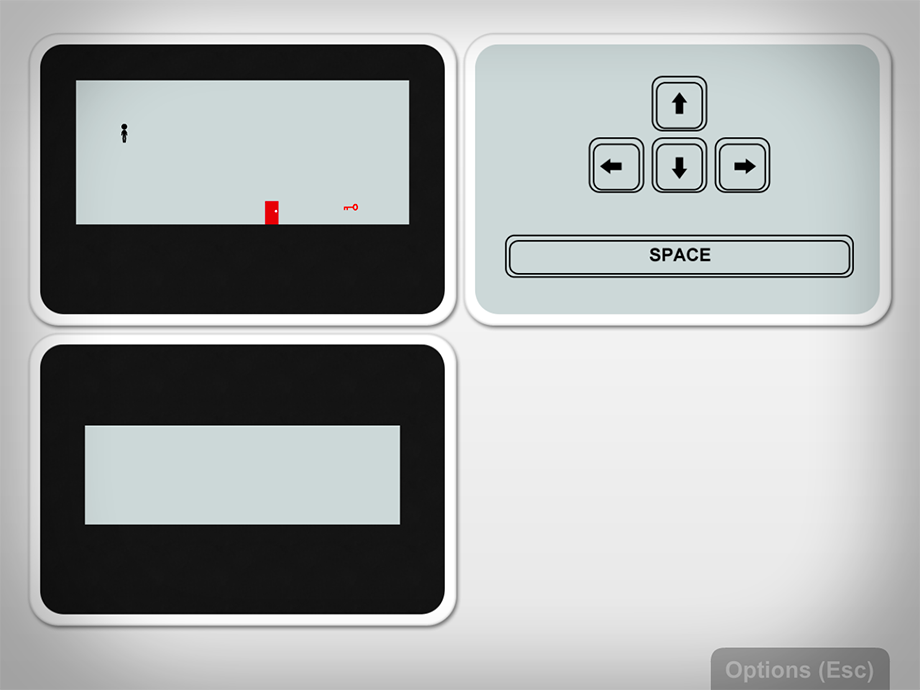
Letting You Experiment
Playtesting showed that players generally skipped any text. Players just wanted to start messing with the game.
So in the first level, you're shown the inputs. You play with them to figure out what they do.
Getting You Invested
Browser games are played on web portals next to thousands of other games. I needed to quickly show you something interesting to keep you around.
The second level lets you explore the game's concept without requiring any other knowledge. Playtests showed that this was players' "Aha!" moment, where they understood the concept and got excited by the novelty.
Designing Your Failure
In playtesting, I found that players learned more quickly from negative examples than positive ones. I designed levels so that you would try something, fail, and then consider, "Why?"
Playtesters felt like they were figuring out the game's rules on their own.
The character can only move across edges that visually match. This level's design encourages you to move immediately to the right to get the key, but that won't work. Through failure, the you learn about matching edges.
Clarifying Through More Failure
I identified misconceptions about the rules through playtesting. I added puzzles to show counterexamples to these misunderstandings.
Players would only focus on matching the character's current "tunnel". This level shows you that the entire edge of the tile must match in order to move across it.
Using Data and Feedback
After Continuity shipped, we started to get feedback and data from players. I produced an update to the game that increased the average play sessions by over 20%.
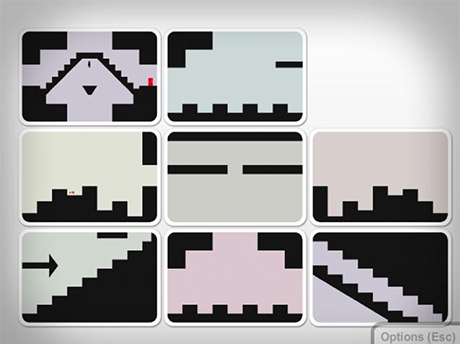
Learning from What People Say
Originally, each tile in a Continuity puzzle was an arbitrary color to help you track each tile as they moved. I learned from forums that many players wrongly believed these colors affected when they could move between tiles.
I removed the differing tile colors to avoid confusion.
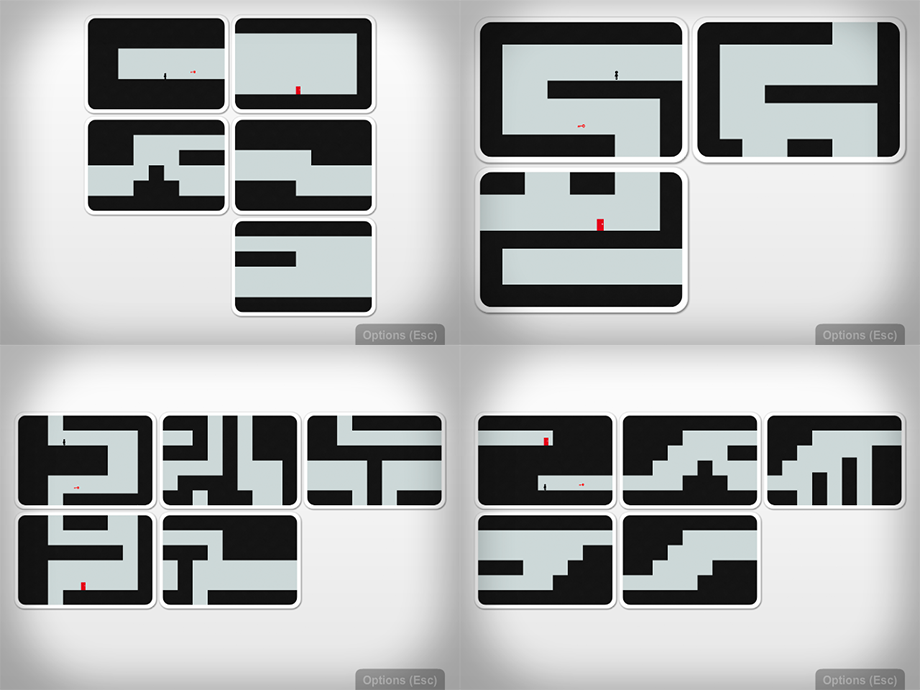
Learning from What People Do
Google Analytics showed a sharp player drop-off around level 8. This was when the game got harder and levels got bigger.
I added new levels to the game to more gradually transition players to the later, harder levels.
Results
Continuity was released in November 2009. Since then, it's been played by over 12 million people.



Best Student Game
2010 Independent Games Festival
Gameplay Innovation Award
IndieCade 2010
Best Web Game
Swedish Game Awards 2010